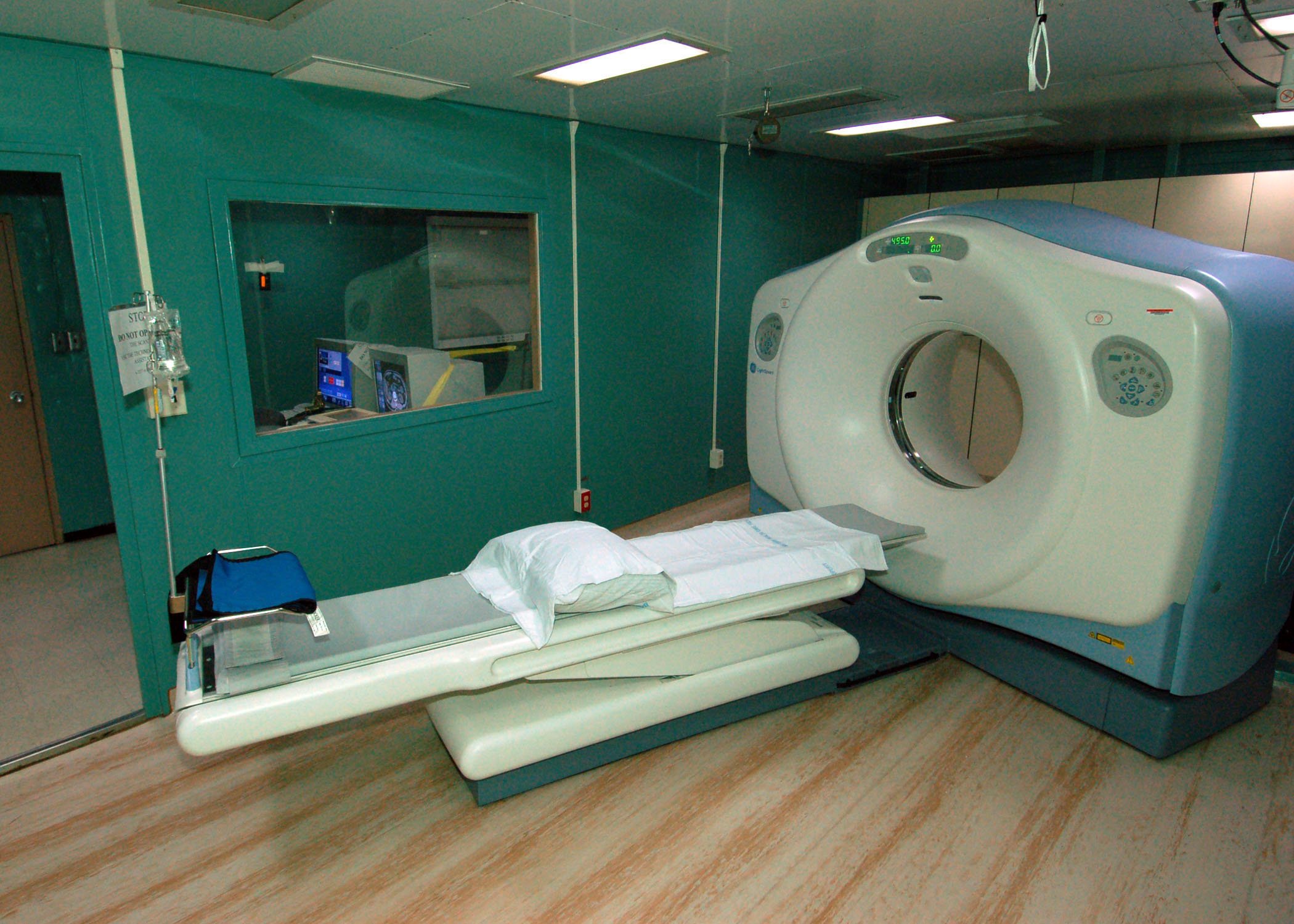We all have studied and read about vitamins at least once in our academic lives. Not everyone has a photographic memory. Therefore, this article will start from the basics of vitamins and the tests according to the relevant vitamins along with their symptoms and results.
What are vitamins?
To put in simple words, vitamins are nutrients required for proper sustenance and functioning of human body.

Each vitamin has a certain set function, failing to get these leads to deficiency of the respective vitamin. Each of the vitamins are unique and are very much essential to protect the body from any health disorder. Deficiencies can also bring about a poor immunity and other disorders like cardiac diseases, orthopedic diseases and even cancers.
Vitamins can be received from different foods and at times even from medicinal supplements. They are also present in foods obtained from animals. The levels of vitamins in the body can be checked through basic blood tests that generally do not require midnight fasting.
What are the types of vitamins?
As mentioned above, there are 13 important vitamins that help the human body function well. They are listed below along with the symptoms that suggest their deficiency and hence demand testing.
1. Vitamin A
Vitamin A is a fat-soluble vitamin, which means it can be stored in your body for a long time. Fat soluble vitamins are dissolvable in fat.
Vitamin A is essential for promoting bone health, building resistance to diseases and external threats, and even reproduction. It is a vitamin that is also responsible for producing retinol. The pigment in the eyes is formed because of this vitamin. Deficiency of this vitamin can be a trigger for other disorders.

What are the sources of Vitamin A?
i] Green Leafy vegetables: Spinach, broccoli, kale, parsley are few sources of green leafy vegetables that provide vitamin A.
ii] Non-vegetarian food products: Beef liver, cod liver oil, eggs, meat, chicken are few sources of this vitamin.
iii] Milk: Dairy products like fortified milk, butter and cheese are good sources of vitamin A as well.
iv] Other fruits and vegetables: Carrot, apricots, cantaloupe, sweet potatoes also contain vitamin A.
What are the symptoms that can identify testing for Vitamin A?
1. Night blindness – People who have vision disorders such as night blindness, poor vision during night, dry eyes should go for Vitamin A testing.
2. Anemia – Those who have a poor hemoglobin and have a pale skin also should get tested for vitamin A.
3. Liver disorders – Liver cirrhosis, liver damage or existence of any malfunctioning in the liver is also reason enough to get a vitamin A testing.
4. Weight loss – Sudden and unexpected weight loss, excess hair fall, dry hair, cracked skin are signs of vitamin A deficiency.
Normal ranges of Vitamin A:
5,000 IU is the range of normal levels of vitamin A in people of all ages.
2. Vitamin B12
Vitamin B12, also known as cobalamin, is essential for formation of red blood cells in the body. It is also essential for proper metabolism. It is a vitamin that is soluble in water and hence doesn’t remain in the system for long. It is not produced in the body; it needs to be consumed from the relevant sources.
However, people who are vegetarians have a poor B12 level owing to their vegetarian diet. People who’ve undergone any gastrointestinal surgery also have poor ability to absorb dietary B12.

What are the sources of Vitamin B12?
i ] Dairy products: Certain dairy products are a good source of Vitamin B12.
ii] Meat
iii] Fish and seafood
iv] Flaxseed
What are the symptoms that can identify testing for Vitamin B12?
1. Yellowed skin – People who have a B12 deficiency are most likely to have yellow eyes and symptoms similar to that of jaundice. The skin also appears pale because the red blood cells do not enter into the system as they are too bigger to do so.
2. Abnormal gait – Vitamin B12 is responsible for proper functioning of central nervous system. And hence, the mobility and gait are affected directly in event of a B12 deficiency.
3. Mood swings – Mood swings and mental disorders like depression are linked to B12 deficiency. If you happen to notice mood changes for no reason, that could be an indicator of low B12 levels in your body.
4. Vision disturbances – Vision disturbances are common in people who suffer from deficiency of B12. People having this deficiency cannot see clearly and have light sensitivity as optic nerves are affected by this deficiency.
5. Breathlessness – When there is lack of vitamin B12 in the body, there’s a tendency to get tired and fatigued at the slightest of effort. If you identify with these signs, then it is better to undergo testing for vitamin B12.
6. Memory lapses – When your bouts of forgetfulness become frighteningly frequent, it could be a sign of B12 deficiency.
Normal ranges of Vitamin B12:
6 mcg is the normal vitamin B12 range in adults.
3. Vitamin B2 (Riboflavin)
Vitamin B2 or riboflavin is another water-soluble vitamin. It converts nutrients in the food you consume into energy for your daily functioning. It is the necessary factor for maintaining your energy levels and preventing from making you feel tired. It is the secret to a healthy skin and lustrous hair. An optimum level of riboflavin in the body means the digestion process in the body is going on how it should be going.

What are the sources of Vitamin B2?
i] Organ meat: Organ meat like that of liver, kidney and heart from pork, chicken and beef are high on vitamin B2.
ii] Fish: Fish like mackerel, cod, bream, salmon and sardines contain vitamin B2. Seafood like lobsters, scallops, oysters are also good sources of this vitamin.
iii] Dairy products: Milk, ice-cream, yogurt and cheese are few dairy products that contain vitamin B2.
iv] Fruits: Fruits like apple, apricots, pear, pineapples, raspberries, papaya and watermelon are few that contain vitamin B2.
v] Vegetables: Asparagus, French beans, celery, mushrooms, potatoes contain vitamin B2. Consumed in boiled form so that can ensure you prevent getting deficient. Beetroot, bell pepper, onion, spinach, broccoli, are few more.
What are the symptoms that can identify testing for Vitamin B2?
1. Mouth ulcers and constipation – The person having vitamin B2 deficiency does not have a good metabolism. They tend to get mouth ulcers and constipation often.
2. Decreased wound healing – People who have poor riboflavin levels have a slow wound healing capacity. That is an indicator of deficiency.
3. Dermatitis – It is a term for describing inflamed skin. It is not contagious and its indications are scaly and itchy patches on skin along with rashes. It is because of vitamin deficiency. Cracked lips are also a sign of B2 deficiency.
Normal ranges of Vitamin B2:
1.7 mg is the normal Vitamin B2 range in adults.
4. Vitamin B3 (Niacin)
Vitamin B3 is another example of the water-soluble variety. Niacin works to contribute in the digestion process and production of energy. These supplements shouldn’t be taken as over-the-counter pills to prevent unwanted side-effects. They should be only taken if prescribed by the doctor because of deficiency. Niacin rich foods have the capacity to lower cholesterol levels in the body. It also is a good way to rein in on risk of cardiovascular disease. It is a good remedy for people suffering from skin acne.

What are the sources of Vitamin B3?
i] Fish – Fishes like tuna, shrimp, sardine and salmon can be consumed to get vitamin B3. Other non-vegetarian foods that are rich sources of vitamin B3 are beef liver, lamb meat and turkey.
ii] Vegetarian alternatives – If you are looking for vegetarian alternatives, then broccoli, beans, nuts, sprouts, green leafy vegetables, granola bars, asparagus and mushroom is the answer to your question for your niacin deficiency.
What are the symptoms that can identify testing for Vitamin B3?
1. Digestive issues – In event of vitamin B3 deficiency, the person’s digestion is affected. He/she may also suffer from diarrhea, nausea and vomiting and other gastrointestinal problems.
2. Mental problems – Mental problems seen in people suffering from vitamin B3 deficiency include hallucinations, decline in recognition ability, depression, disorientation etc.
3. Stomatitis – A condition where there is inflammation and soreness in the mouth.
Normal ranges of Vitamin B3:
20mg is the normal range of vitamin B3 in adults.
5. Vitamin B5
Vitamin B5 is also known as pantothenic acid and is a water-soluble vitamin. It is essential for metabolizing fat in the body and producing energy for it. It is also substantial for producing red blood cells in the blood. This vitamin also contributes to formation of sex (testosterone, progesterone, oxytocin and estrogen) and stress hormones (Adrenaline, Cortisol, Norepinephrine).
What are the sources of Vitamin B5?
Foods like whole grains, avocados, seafood, yogurt, legumes, lentils, milk, pork, animal meat, mushroom, are few rich sources of vitamin B5.
What are the symptoms that can identify testing for Vitamin B5?
1. Vomiting – The person having vitamin B5 deficiency has bouts of vomiting that lead to increased irritability and fatigue.
2. Reproductive ability – Severe deficiency of vitamin B5 can affect reproductive ability in men and women.
3. Sleep cycle – Sleep cycle is disturbed in event of vitamin B5 deficiency. The person suffering from it also experiences fatigue and tiredness at littlest of exertion.
4. Digestive diseases – Digestive diseases such as irritable bowel syndrome, leaky gut syndrome, chronic indigestion, are few digestive diseases that can happen in event of severe vitamin B5 deficiency
Normal ranges of Vitamin B5:
10mg is the normal range of vitamin B5 in adults.
6. Vitamin B6
Vitamin B6 regulates immune function and proper working of the nervous system. Like other aforementioned B-complex vitamins, this one also assists in red blood cell formation.
What are the sources of Vitamin B6?
i] Milk: Milk is the best and easily available source of getting dietary vitamin B6.
ii] Fishes: Fishes like salmon and tuna are also good alternatives for helping you overcome or prevent vitamin B6 deficiency.
Other than these, carrots and spinach can be consumed by cooking a soup or salad to get benefits of vitamin B6, if you happen to be a vegetarian.
What are the symptoms that can identify testing for Vitamin B6?
1. Disorientation – The person suffering from deficiency of B6 experiences disorientation and confusion in day-to-day life.
2. PMS symptoms – Women suffering from vitamin B6 deficiency suffer from aggravated symptoms like pain and mood swings in the days before their menstrual cycle begins
3. Irritability – The deficiency of vitamin B6 causes irritability, fatigue, changes in mood and also depression
4. Dry skin – A deficiency of vitamin B6 can also cause dry and itchy skin.
Normal ranges of Vitamin B6:
The normal level of vitamin B6 in adults is 2mg
7. Vitamin B9 (Folic acid)
It is a water-soluble vitamin. It is another vitamin that is useful for production of energy. Excess amount of this vitamin in the body is released in the form of excreta. It improves heart health by controlling cholesterol in the body. It is not only essential for formation of red blood cells, but also in synthesis of genetic material and prevention of hearing loss. Folic acid supplements should be taken by pregnant mothers to avoid serious health concerns like autism, deformities and defects like cleft lip and palate in their babies.
What are the sources of Vitamin B9?
Oranges, milk, mushrooms, green peas, spinach, sunflower seeds, egg yolk, cauliflower, cabbage are few sources of folic acid.
Normal ranges of Vitamin B9:
The normal level of vitamin B9 in adults is 400 mcg.
8. Vitamin C
Vitamin C is also a water-soluble vitamin. It is responsible for wound healing and regulation of immunity system. It also plays a role in formation of skin, blood vessels, tendons etc. It is also necessary to maintain proper bone health. It is not stored in the body, that is why, it needs to be consumed regularly through fruits and vegetables. You would automatically notice an improvement in the quality of your skin when you increase vitamin C in your diet. Vitamin C also fights damage caused by free radicals to the skin.

What are the sources of Vitamin C?
Fruits like orange, cantaloupe, mango, papaya, kiwifruit, strawberries and watermelon are rich in vitamin C.
What are the symptoms that can identify testing for Vitamin C?
1. Iron deficiency – This is the most telling sign that suggests vitamin C deficiency. This deficiency means the body’s iron absorption capacity has reduced and it needs to be restored.
2. Dry hair – Dry hair are an indicator of vitamin C deficiency. If you notice split ends, dry and lifeless hair, it could be helpful to undergo a vitamin C test.
3. Wound healing – Vitamin C deficiency also spells a lower wound healing ability for the body. That also means, the person loses blood at the slightest of bruising.
4. Aching joints – When your joints ache or swell without reason, that could be pointing towards deficiency of vitamin C.
Normal ranges of Vitamin C:
60 mg is the required level of normal vitamin C in the body.
9. Vitamin D
Vitamin D, known as sunshine vitamin, is fat soluble. It is necessary for blood pressure regulation and hormone production among other body functions. This vitamin also absorbs calcium and hence is necessary for bone growth. It also increases immunity of the body.

What are the sources of Vitamin D?
i] Milk: 1 cup of milk consumed every day is enough to fulfil the body’s vitamin D requirements.
ii] Cheese: As much as cheese is a comfort food, it is also a source of vitamin D.
iii] Fish: Trout, tuna, mackerel, salmon and herring are typical examples of oily fish that contain vitamin D. Fish liver oil is another way to get your vitamin D supply.
iv] Mushroom: Mushroom is a good option for vegetarians to fulfil their vitamin D requirements. They taste best when cooked or added in salads.
v] Egg yolks: The yellow part in eggs is a good source of vitamin D. Therefore, do not trash it while consuming or cooking the egg.
What are the symptoms that can identify testing for Vitamin D?
1. Aching bones – Lack of vitamin D contributes to the aches in bones, joints and lower back pain. Such people are also likely to have deficient calcium levels. This indicates low bone density and people having it succumb to fractures and ligament injuries at the slightest fall or loss of balance.
Depression – Low vitamin D levels in one’s body are also linked to depression. However, consuming supplements or vitamin D rich sources is known to cure the deficiency.
2 Lack of exposure to sunlight – Those who do not include milk and vitamin D rich products in their diets and those who do not have sufficient exposure to sunlight are likeliest to have a vitamin D deficiency
3. Vegetarians – People who do not eat fish and non-vegetarian foods that are high on vitamin D are likely to have deficiencies of this vitamin
4. Hair fall – Hair fall that is severe can lead to rickets and softened bones and is a result of vitamin D deficiency. So do not ignore hair loss for something minor, book yourself for a vitamin D testing soon.
Normal ranges of Vitamin D:
400 IU is the ideal level of vitamin D in adults.
10. Vitamin E
Vitamin E is a fat-soluble vitamin. It is also an antioxidant that performs immune function and contributes to blood vessel formation. This vitamin prevents cells from getting damaged. Metabolism and immunity greatly improve because of vitamin E. It is great for hair and scalp health as well.
Women suffering from PMS symptoms can gain from vitamin E as it alleviates its symptoms greatly. Those who have vision problems like macular degeneration can benefit from consumption of vitamin E rich foods. It is a good way to regain lost energy after a strenuous workout.
What are the sources of Vitamin E?
i] Green Vegetables: Green leafy vegetables, broccoli, parsley, spinach, kale, are all good sources of vitamin E. Along with improving your vitamin E levels in the body, they also improve your immunity by considerable levels.
ii] Fortified cereal: Fortified cereal must be a boring and lack of taste breakfast option according to many. However, it is fortified with different vitamins and minerals. Hence, this is a good way to consume vitamin E.
iii] Almonds and walnuts: Almonds are a good source of vitamin E. When consumed in the soaked form, almonds can provide the best results. Walnuts contain gamma tocopherol that is a type of vitamin E.
iv] Fruits: Fruits like mango and kiwi contain a wealth of vitamin E. Consume them sliced, raw or blended in a juice to reap its benefits.
What are the symptoms that can identify testing for Vitamin E?
1. Chronic diarrhea – If you are having chronic diarrhea or any digestive problem that refuses to go away, it would help to get your vitamin E levels tested.
2. Affected immunity – The immune system becomes slow to external agents and factors that trigger diseases and health concerns.
3. Muscular pain – If you experience muscle pain for no apparent reason, deficiency of vitamin E could be the reason.
Normal ranges of Vitamin E:
30 IU is the ideal level of vitamin E in adults
11. Vitamin K
Vitamin K is fat-soluble and also essential for building strong bones in the body. It plays an important role in blood clotting which is necessary to prevent the body from losing excess blood on bruises and cuts. Vitamin K1 (phylloquinone) and vitamin K2 (menaquinone) are the 2 types of vitamin K. Consumption of vitamin K foods can control growth of cardiac diseases in the body.
What are the sources of Vitamin K?
Beans, green peas, asparagus, various green leafy vegetables, kale, spring onions, cucumbers and spinach are few sources of vitamin K.
What are the symptoms that can identify testing for Vitamin K?
Deficiency of vitamin K is very rare in adults. However, few symptoms like bleeding quickly, stools that are dark black or bloodied in color, weak bones, are easy to identify a deficiency. In extreme cases, brain hemorrhage also could happen when the severity of the deficiency is high.
Normal ranges of Vitamin K:
80mcg is the ideal level of vitamin K in adults.
12.Vitamin B7 (Biotin)
Vitamin B7 is a water-soluble variety. Biotin is a key requirement for proper performance of metabolic processes. People having type-2 diabetes can benefit by this vitamin, since it is useful for reining on the high blood sugar levels in their body.
What are the sources of Vitamin B7?
Milk, soy, fortified cereal, wheat bran, organ meats, cauliflower, avocados, salmon, liver, pork, cheese, spinach are few sources of biotin.
What are the symptoms that can identify testing for Vitamin B7?
Deficiency of biotin is not common. Few symptoms however are, brittle nail and hair, muscular pain, tiredness and dry skin.
Normal Ranges of Vitamin B7:
300 mcg is the normal range of biotin in adults.
Did the symptoms ring a bell for you? If yes then don’t just read the aforementioned vitamins and vitamin tests. Go and get yourself and your loved ones tested. Testing does no harm, on the contrary, existence of serious diseases if any gets revealed. If the results are negative, then it is an indicator that you already have a good health.



 If you are taking a routine check-up that doesn’t usually need a prescription, you must note down this point. Before going for few tests, you may require to discontinue medicines that can alter your test reports. If you do not have any idea about the same, talk to the lab technician in advance.
If you are taking a routine check-up that doesn’t usually need a prescription, you must note down this point. Before going for few tests, you may require to discontinue medicines that can alter your test reports. If you do not have any idea about the same, talk to the lab technician in advance. If you are suffering from a serious disorder like HIV, you should let your lab technician know. This is because such diseases can spread through body fluids. Lab analysts must be extra careful with the blood samples of such individuals.
If you are suffering from a serious disorder like HIV, you should let your lab technician know. This is because such diseases can spread through body fluids. Lab analysts must be extra careful with the blood samples of such individuals.
 It is everyone’s pipe dream these days to have a flat stomach and enviable washboard abs just like those models gracing glossy magazine covers. However, sadly, this pipe-dream does not reach fruition beyond a couple of weeks after the dust has settled on the new year. Most people then resign to the fact that they would never be able to vanish the ugly fat deposits they have in different regions on their body. As a result they choose to not leave the comforts of their bed every morning. Also eating anything and everything without thinking of its consequences!
It is everyone’s pipe dream these days to have a flat stomach and enviable washboard abs just like those models gracing glossy magazine covers. However, sadly, this pipe-dream does not reach fruition beyond a couple of weeks after the dust has settled on the new year. Most people then resign to the fact that they would never be able to vanish the ugly fat deposits they have in different regions on their body. As a result they choose to not leave the comforts of their bed every morning. Also eating anything and everything without thinking of its consequences! 


